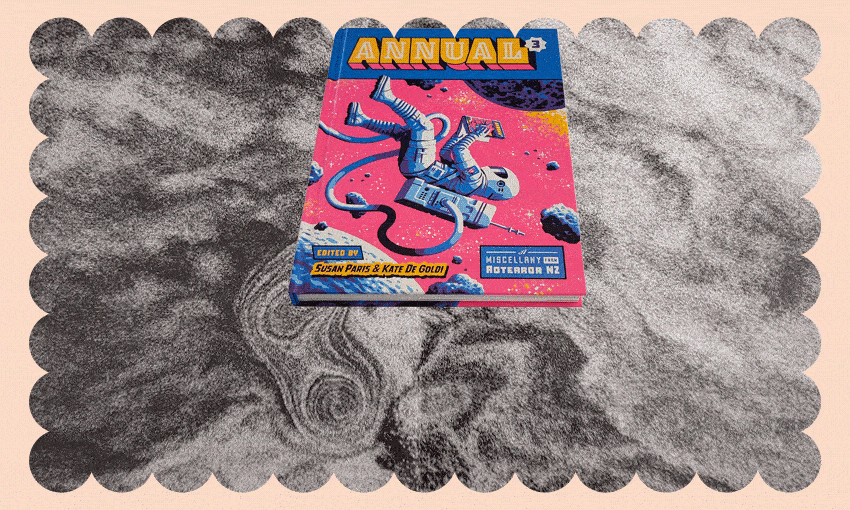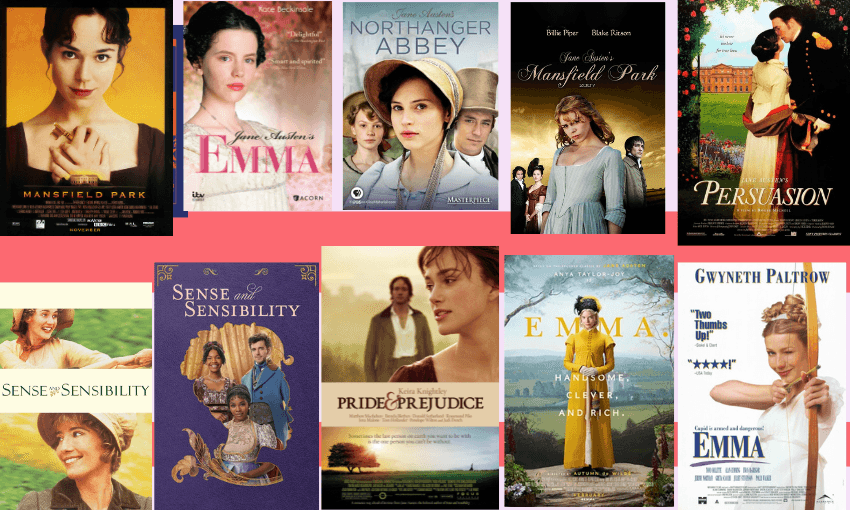Susan Paris is one of Aotearoa’s most experienced publishers for children, and she’s worried that her industry is failing middle readers. So she decided to do something about it.
Back in the early 2000s, Kate De Goldi and I often talked about the over-supply of native birds in New Zealand picture books. The endless parade of pūkeko, pīwakawaka, kākāpō, and kiwi was impossible to ignore. Sometimes, the birds wore little jackets and gumboots; almost always their feathers were ruffled about one thing or another, though we all knew the predictable plot line would be speedily resolved.
It wasn’t that we had anything against native fauna per se, or birds in books more generally – it was just so relentless. A cage of someone’s making. We just couldn’t fathom whose or why.
Our best guess was the assumptions made by some publishers and booksellers on behalf of customers. The market, in other words. What people wanted, allegedly – and only the most truculent would argue with that. Yet the suspicion remained: when it came to local content, young readers were being short-changed. And looking downstream, what did this low benchmark mean for a slightly older audience, those newly independent readers, eager to spread their wings and discover whole new worlds on the page? Were our 10-year-olds being underserved, too?
The problem with books for middle readers was slightly different. Despite the occasional boomer from the likes of Jack Lasenby and Joy Cowley, it seemed the glory days of New Zealand children’s literature – the 80s and 90s, when we really hit our stride – were in decline. In their place we had worthy, badly designed non-fiction and rip-off series brainstormed in some marketing department, where the focus was on sales. But mostly, the mood was desultory, the scene set for blockbuster imports with their goofball humour and guaranteed good times. These were the books the machine was insisting all kids want. The ones that are all mirror, no window – and circus fun-mirrors at that.
That was 20 years ago now. The native bird thing – and the troubling habits it represented in the sector – became an ongoing conversation that helped the two of us hammer a few stakes in the ground. Arguably, native birds are Annual Ink’s origin story. We understood (and still do) that being commercially viable comes with caveats. To survive means making books that sell. But we could also see the industry has a tendency to be chicken-and-egg. The big publishers with their big publicity budgets – and to some extent, certain kinds of booksellers too – decide what stock will move, then make sure it does. For numerous reasons (time, costs, hard lessons), it was clear Annual Ink would remain small. Smaller than small: since 2017, we’ve published just six titles. Like pretty much every writer in New Zealand, we’ve kept our day jobs. But the payoff has been worth it. Big Gulliver requires constraints, little Gulliver is free to roam.
Middle readers have remained Annual Ink’s target audience, and our spiritual home. It’s the exact same audience literacy expert Stuart McNaughton tells us we’ve all been losing for some time. Nine, 10, 11-year-olds are walking away. The theories why are many and involved, but it makes sense to question if the industry is failing readers in some way.
McNaughton’s research paper The Literacy Landscape in Aotearoa New Zealand was released in 2020. It confirmed our long-held hunch: that many newly independent readers weren’t getting what they needed; that maybe they were bored by reading because the homogenous titles on offer – the ones that suck up all the oxygen and crowd out the rest – are limited. Blockbuster series have their place. And it’s easy to be consoled by the mere sight of a child with a book. But we all know that reading needs to reward in multiple ways. How can kids make sense of the world – how can they become optimists and remain curious and grow as humans – if their whole reading world is up a treehouse, farting?
It’s an obvious pitfall, underestimating the brain power of a younger audience. Or equally, overthinking how their needs might differ from adults’. Annual Ink spends little time contemplating what’s “age appropriate”. Or even, yikes, what kids might want! That way lies paralysis, and few readers, young or old, can necessarily answer that question. Nor should they have to. It’s the job of writers, illustrators, and publishers to create books with depth, that transport readers to a different place – and provide reasons to return.
This line of thinking didn’t mean we set out to commission essays on the benefits of keyhole surgery. But wait, essays for kids? Why weren’t they a thing? New Zealand writers excel at creative non-fiction. Sharing the form with a younger audience was a no-brainer. And what about flash non-fiction? Did the form even exist? We didn’t bother to Google. The possibilities of short, potent texts exploring new territory for kids was obvious. Open pasture beckoned.
We didn’t proceed with caution. We trusted our instincts and the hugely talented writers and illustrators we’ve worked with over the last eight years: Whiti Hereaka, Lloyd Jones, Bill Manhire, Victor Rodger, Nick Ascroft, Rebecca ter Borg, Anahera Gildea, James Brown, Giselle Clarkson, Sharon Murdoch, Toby Morris, Sam Duckor-Jones, Edith Amituanai, Jonthan King, Eve Armstrong, Ant Sang, Paul Beavis … to name just a few.
Many of the pieces they helped create for our most successful publication – the Annuals – defy classification. Or at least had odd beginnings. “Have you heard Wellington Zoo has a kill list in case of mass escape after an earthquake?” we mentioned to poet Tim Upperton in 2015, around the time we were putting together the first annual. He hadn’t, but he could guess where the conversation was headed. “Susan has this image in her head of Captain Cook queueing at a money machine,” we told Kāpiti Coast illustrator Gavin Mouldey over coffee one day. Gavin had no such image, but he got the gist and turned a woolly brief into something uniquely his own. In ‘Aotearoa Out of Time’ – his homegrown riff on Where’s Wally? for Annual 2 – Cook did turn up, on a ride at an A&P show. On the following page, alert readers could also spot Kate Sheppard raising money at a supermarket sausage sizzle. The piece was a history lesson, of sorts, without the chronology or reverence.
There were the story-come-board games ‘Naked Grandmother’ (Annual) and ‘Blended Families’ (Annual 2). Both took comic risks, satisfying a helpless urge to make kids laugh – yet only one attracted a letter of complaint (from an outraged grandmother, coincidentally: she had glued the two pages together because divorce was no laughing matter). There was ‘Mud Prayer’ by Renata Hopkins, a story set in a boarding house in 1877 on the night a guest goes into labour and told from the perspective of young Annie, the God-fearing, resentful hired help: “Wet or dry, the travellers were all the same to her. A load of mouths to feed, boots to clean, and piss pots to empty.”
The miracle of birth provides respite from the endless drudgery and West Coast rain. Annie concludes: “Well, those bogging angels could take their fun where they found it. For all that it was clean and spotless up there, it was a sight more lively down here in the mud and the blood and the rain … And couldn’t she just picture those angels, peering down from Heaven? Pure envious they were, surely, at the sight of this blessing; this holy, earthly grace.” Renata’s story had substance and was beautifully crafted. It was nuanced and relished language. Most of all, it was deeply original, and reading the first draft made us feel gratitude. It showed what was possible when really good writers write for children and aren’t held back.
There has been reflection along the way. ‘Never Say Goodbye: The Art of Taxidermy’ caused a minor stir when it appeared in Annual 2. The piece was classified as “free-range” on the contents page (ie: not classified at all), but really, it was satire: an interview with Quentin Arundale, a man the introduction claimed had mounted hundreds of deceased pets so that mourning owners need never be parted from “their beloved beasties”. Quentin, “a taxidermist with heart”, was entirely made up. It was an elaborate joke that extended across six pages, complete with photos taken one spring morning on a bonkers photo shoot in Lyall Bay. Friends and neighbours politely queued, dead pets in assorted bags and boxes, waiting for Quentin’s services.
In part, the text was a homage to annuals of the past, which often contained an unintentionally kooky profile of a kooky adult doing kooky stuff. The essential difference in Annual 2 was that our profile was for fun – the high-jinks promised in the book’s blurb. But of course readers didn’t know Quentin was invented, something that discomforted a few parents and bothered one reviewer. “It comes perilously close to taking the mickey out of the reader,” she said.
We took her point. But we still take risks, and we like to think they’re thoughtful ones. The taxidermy piece did have a subtext: you can’t simply trust what’s on the page, despite the convincing photos. It’s easy to be led down the garden path. And doesn’t it make sense if reading for pleasure sometimes nudges critical-thinking skills, too? Now, in this highly contested fake-news era, Quentin seems a man ahead of his time.
Still, we rethought our approach. Some readers might appreciate a few signposts, so Annual 3 would own its satire. This time, it’s listed on the contents page, below Game and Screenplay. Officially, we have two pieces of satire: an article in the Whero Times about a frog who hit 10 million followers during lockdown, and a piece called ‘Gone Girls: The Ones We Almost Forgot’ (no spoilers). Arguably, Gavin Mouldey’s eight-page masterpiece of visual storytelling, ‘Edward Gibbon Wakefield’s Lost Marbles’, contains a hefty dose of satire, too, but this only occurred to us after we’d gone to print. That’s OK. We look forward to a few letters to the editors. It’s good to be kept on our toes.
For the record, Annual 3 does contain a native bird – a kākāpō on the second-to-last page. Predictably, there’s a twist. Rika Nagahata has provided line work only. Kids are invited to colour the bird in. In some ways, it’s the perfect symbol for the Annuals: homegrown yet full of surprises (Rika’s kākāpō is wearing a kimono; borrowed dignity for a comical sort of parrot that keeps odd hours and surely appreciates some classy loungewear). Plus it perfectly underscores the belief that not everything needs to be explained. Always trust the reader – they’ll fill in the rest.
Annual 3: A miscellany from Aotearoa New Zealand, edited by Susan Paris and Kate De Goldi (Annual Ink, $45) is now available from Unity Books Auckland and Wellington.



